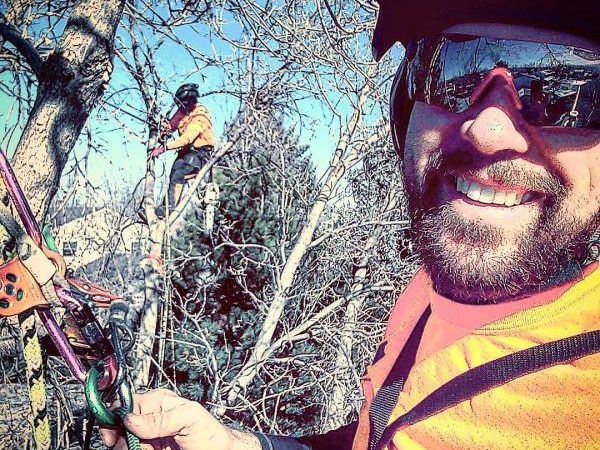Moving into a new home or office and bothered by tree limbs hanging over the structure? Have a driveway blocked by low hanging limbs? Aggravated due to the changing seasons and the debris created from falling leaves?
If any of these above situations relates to your current state then don’t hesitate to take the necessary action for an immediate remedy. However, far too often the general public fails to consider the health of a tree, shrub or bush and begins taking measures into their own hands without knowledge of the damage being done.
First, consider the time of year prior to grabbing your hedge clippers or chainsaw and beginning to cut limbs away from the tree. While this may provide an immediate fix to your problem, you may very well create even more of a hassle. Trimming and pruning trees at the wrong time of the year can harm the plant and have lasting effects on the aesthetics created by foolishly cutting away.
Instead, find a professional who can assist in both the administration and timing of when and where to prune for the best results. According to the National Arbor Day Foundation, the following seasons of the year offer appropriateness for when to prune.
SPRING
Typically only flowering trees will be pruned in the spring of the year in order to enhance their production in later seasons. Once your trees bloom in the spring wait to prune until after the flowers have faded to avoid causing damage.
Trees and shrubs that flower in mid to late summer can also be trimmed in the spring without harm.
SUMMER
Pruning in the summer must meet specific needs related to the growth of the tree or shrub. Trimming in this season is related to directing a limbs growth pattern, slowing of any unwanted branches, or the removal of defective areas in the tree.
Once typical seasonal growth is complete, a tree can be safely pruned during the summer months.
FALL
In the fall trees are undergoing a lot of other changes and do not heal well when faced with cutting or pruning. Further, fungi which can cause decay are more active in the fall months and therefore any pruning or cutting should be postponed until a more productive season.
WINTER
The more common practice is to wait until winter season for tree trimming. Not only is it typically not as hot out for the work, but winter trimming can help to create new growth when growing season begins again.
Learn more about winter tree trimming in Denver. Check out our TREE TRIMMING GALLERY here.
If you’re ready to remove your tree limbs and have the overall health of the tree in mind when set to prune, let the certified professionals at Splintered Forest help. They can assist with any and all of your tree trimming, and debris removal needs. The experts at Splintered Forest will be happy to provide you a free estimate for their services and can assist in a variety of ways. With offices in Denver and Evergreen, contact us today for any and all of your tree care needs.

